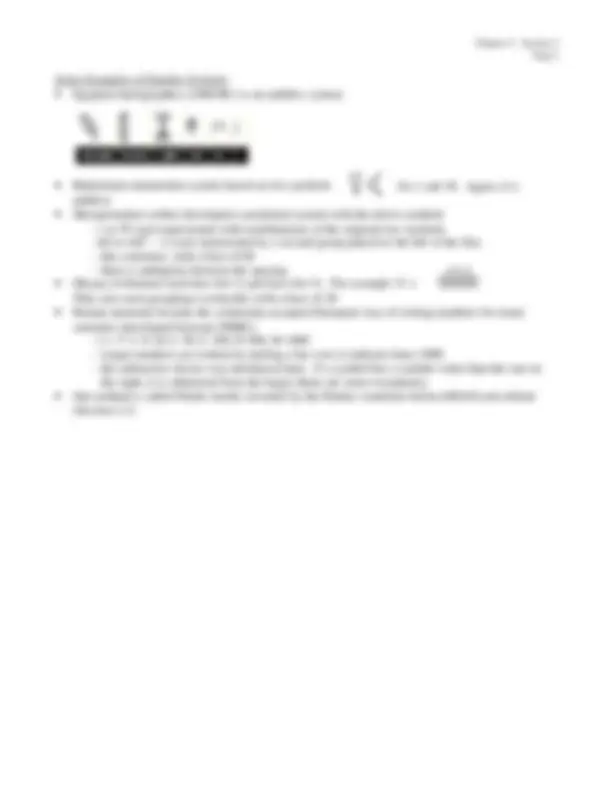
Chapter 2. Section 2
Page 1
Section 2.2 – Whole Numbers and Numeration
Homework (pages 57-59) problems none
A Historical Perspective:
• What skills do we need to understand the concept of numbers?
- compare size shape and quantity
- model to establish one to one correspondences
- be aware of order, or next in sequence
• The fundaments of numbers through counting
Numbers are the basis on which the whole structure of mathematics has been built, and the
positive whole numbers are the basis of all other numbers, for this reason they are called
'natural numbers'
• What does the number 2 mean?
It is a numeral, it is a number-word, a concept in our minds, and it can be a property
possessed by every collection of two objects
• The process of counting does not require an awareness of numbers in the abstract
• It was a long time before abstraction was achieved, and it was an intellectual leap of considerable
proportions
• For example, zero is treated as a number only when we realize numbers are abstractions themselves.
Although it was used as a place holder in number systems, it wasn't until later that it was treated as a
number itself. In the 9th century AD the Hindus recognized sunya (absence of quantity) as a quantity
itself (Math Through The Ages by Berlinghoff and Gouvea, pg 72). In European mathematics, in
the 16th and 17th centuries many were still not willing to accept zero as a solution to equations (Math
Through The Ages by Berlinghoff and Gouvea, page 73)
The Number Line:
• We can look at the numbers and compare them with what is called a number line . On a number line
the points are organized from smallest to largest along the horizontal. An arrowhead is used on each
end to indicate that the number line goes forever in each direction (left and right). A few points are
usually labeled to give you a sense of where you are on the line, and what the spacing is like
• You can get a sense of which numbers are larger, because if a number a is to the right of a number b,
then a is greater than b (a > b). And if a is to the left of a number b, then a is less than b (a < b)
• The symbol '
' means less than or equal to, and the symbol '
' means greater than or equal to
To represent a value on the number line, simply place a dot. Usually one also labels the point and puts
its numerical value, if it isn't there already










